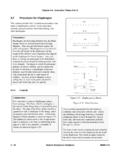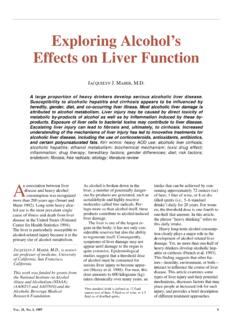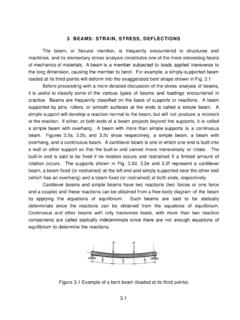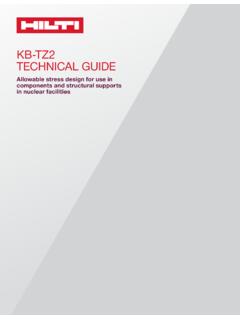Transcription of The use of L1 in English language teaching
1 The use of L1 in English language teaching Part of the Cambridge Papers in ELT series February 2019 CONTENTS2 Introduction4 L1 and the teacher8 L1 and the student10 Practical classroom implications17 Conclusion18 Recommendations for further reading19 Bibliography Introduction A little less than ten years ago, it was possible to refer to the learners L1, or first language , as the elephant in the room of English language teaching (Levine, 2011). Teachers could not fail to be aware of this elephant, or its impact on their students learning, but it was rarely mentioned. Largely absent from teacher training courses and manuals, from conferences, journals and books, the topic was ignored in the discourse of ELT and it was generally held that the L1 itself should be avoided by learners. The widespread belief that English is best taught through English alone, without the mediation of the L1, can be traced to the beginning of the 20th century when there was a rapid development of private language schools for adults, who wanted to learn a language for practical, rather than academic, The marketing of these schools often focussed (as it still does) on the difference between their English -only approach and the more traditional methodologies typically used in secondary school classrooms, which were based on the 19th century Grammar-translation approach.
2 In Grammar-translation approaches, the main focus was on grammar, which was explained by the teacher in the L1, and a significant part of classroom time was devoted to translating sentences into and out of the target language . Since then, a policy of English -only has spread, with many different institutions banning the use of the , however, have changed. Since the publication of Guy Cook s Translation in language teaching (2010), a consensus position has evolved in the academic community (but much less so for the time being in educational institutions) that not only is a policy of English -only unachievable in many contexts, but it may also be undesirable. The lack of research in support of an English -only policy, and a large number of research findings indicating that occasional use of L1 may be beneficial2, has led to new interest in the role of L1 in learning another language . This is now reflected in revisions to teacher training manuals and the specifications of teacher training qualifications, at conferences and in only is a policy of English only unachievable in many contexts, but it may also be addition to the acknowledgement that the use of L1 in English language classrooms does not necessarily entail the adoption of a traditional Grammar-translation approach, there have been a number of other developments which have challenged the orthodoxy of English -only methodology.
3 Most significant among 1 See Kerr (2016) for more information on the relationship between English -only policies and the influence of private language A comprehensive summary of research findings can be found in Hall and Cook (2012).2these is a reconceptualization of the aims of language learning. There is a growing recognition that the objective for most language learners is not to become like a native-speaker, since (1) this is not necessary (or even helpful) for what they want or need to do in English , and (2) they are unlikely to achieve it. A more appropriate and realistic objective is to become a communicatively competent bilingual. Described by the Council of Europe (2001: 4) as a competence [..] in which languages interrelate and interact , a bilingual approach is likely to be more appropriate and fruitful than a strict policy of English -only. The updated Common European Framework of Reference for Languages (CEFR) (Council of Europe, 2018) includes mediation (between languages) as a key component in its framework for describing how languages are used.
4 Can-do statements now include competences like translating from one language to another, or explaining, in one language , information that is derived from a text in another. In the perspective of the Council of Europe, plurilingual and pluricultural competence are fundamental parts of the aims of language the research into the role of L1 in language learning, the move towards a more comprehensive description of language competences in the CEFR is informed by both a deeper understanding of the language backgrounds of language learners and of the increasing diversity of language classrooms. Many classrooms, especially in large cities, contain students with very varied language backgrounds and learning needs. For example, the first language that a learner acquired as a baby may not be the same as the language that they feel most comfortable with now, and neither of these may be the same as the shared language of the classroom in which they are learning English . The rising global popularity of Content and language Integrated Learning (CLIL) also requires educators to rethink their policies on the language of instruction.
5 CLIL, where school subjects and an additional language are taught in tandem, is a quintessentially bilingual approach. There are many different models of CLIL, but, in most, code-switching (switching from one language to the other) and translanguaging3 (the process of using all one s language resources to achieve communicative goals) are standard features. In the light of these changes, it is not surprising that English -only policies in English language classrooms are being rethought in many parts of the world. The rest of this paper explores ways in which the L1 may be exploited in more contemporary and communicative approaches, along with reasons for doing See Conteh (2018) for a brief description and evaluation of The largest survey into teachers attitudes towards L1 use was commissioned by the British Council and carried out by Hall & Cook (2013).5 Different researchers have found different figures. Summarizing earlier research and drawing on his own studies, Levine (2014), suggests a figure of around 20%.
6 Littlewood and Yu (2011) suggest a figure of 40% or higher may be more accurate. L1 and the teacherTeachers attitudesThe attitudes of teachers towards the use of L1 in the English language classroom is reflected in their teaching practices. Their attitudes will be shaped by a number of factors, including their own experience as language learners, the pre-service and in-service training that they experience, the institutional policies of the institutions in which they are working, and their experience as teachers. The picture that emerges from surveys into teachers attitudes is Taking a global figure of English language teachers working in a wide variety of contexts, the majority believe that the L1 should be excluded from or limited in English lessons (Hall & Cook, 2013). When, however, researchers investigate teachers actual use of L1 in the classroom (see the next section), they find that many teachers make much greater use of L1 in their classrooms than their attitudes would seem to indicate.
7 There is often a conflict between the professed desires of teachers about L1 use and their classroom realities (Copland & Neokleous, 2011). Researchers have found that teachers often talk about resorting to , rather than using , the L1, and the choice of language reflects this tension between desired and actual practices. In this light, it is unsurprising that a substantial number of teachers (around 36% in Hall & Cooks (2013) survey) report feelings of guilt when they feel they need to use the L1. This is clearly a cause for concern: a sense of guilt is unlikely to be helpful to teachers who are striving to understand the issues and to develop professionally (Macaro, 2005). Rather than seeing L1 as a crutch to lean on in times of need, teachers will benefit from a fuller understanding of the role of L1 in language learning, so that they may exploit its potential more teachers make much greater use of L1 in their classrooms than their attitudes would seem to actual use of L1 in the classroomThere is a wide variation in the amount of L1 use by English language teachers.
8 There are classes where it is used for as much as 90% of the time, and others where it is never used. The latter is usually found in multilingual classrooms without a shared classroom language or when the teacher cannot speak the L1 of the students. These contexts are not uncommon in private language schools, especially in English -speaking countries, but are otherwise rare. More commonly, it would appear that the L1 is typically used somewhere between 20% and 40% of the time when there is a shared L1 or classroom For most teachers in most contexts, some degree of L1 use is a feature of their everyday classroom the whole, teachers make much greater use of the L1 with classes of students at lower levels. This can help to aid motivation and alleviate frustration, and the practice is supported by researchers such as Swain and Lapkin (2000) and Macaro (2000). L1 is also more frequently used in larger classes where teachers feel that it is more effective in developing a good classroom atmosphere and maintaining discipline, than it is in smaller classes.
9 4 Since larger classes are more common in state-run institutions than in private schools, it is unsurprising to find that there is greater L1 use in the former. Other factors that can lead to greater L1 use include: the stage of a course (it may take some time for some students to get used to lessons where L1 is not widely used); the length of a lesson (lessons of over an hour in length that are conducted exclusively in English may become very tiring); and the previous learning experiences of the number of studies have investigated the different ways in which teachers use the L1. These can be broadly divided into two categories: core functions and social functions .6 CORE FUNCTIONSSOCIAL FUNCTIONS concerned with the teaching of languageconcerned with the management of the classroom explaining grammar and vocabulary checking understanding of grammar, vocabulary and texts managing personal relationships ( building rapport, maintaining discipline) giving instructions dealing with administrative mattersFigure 1: core and social functions for use of L1In the widest-ranging survey of how teachers use the L1 in English language classrooms, Hall & Cook (2013) found that it was the core functions that featured most prominently.
10 It is worth remembering that there is no evidence that this explanatory function of L1 in language teaching is in any way detrimental to learning,7 so long as it is not the social functions in L1, the development of rapport and the maintenance of discipline appear to be the most common. Expressions of sympathy, for example, are likely to be better understood (by lower level learners) if articulated in the L1. Discipline, with its almost inevitably negative affective response, is probably better not associated with the language that is being the L1 is being used for core or social functions, the teacher s decision to use it is often motivated by a desire to speed things up (Macaro, 2005) or to keep the lesson moving. The time that is saved by quickly sorting something out in the L1 is time that can be used later for more productive activities (Harbord, 1992). More examples of the way in which limited L1 use may lead to greater use of English will be found in the section Practical classroom implications together, it is clear that the different functions of classroom L1 used by the teacher can play an important role in facilitating language learning.







